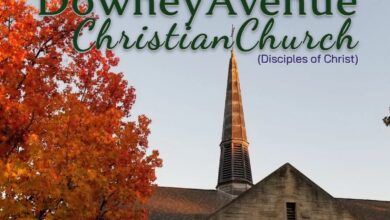STARTING PRACTICE: 1974

When a doctor begins practice, he doesn’t just find an office, put up a sign, and wait for patients to show up. It’s not that easy. In 1974, it was a lot simpler than it is now, but at the time it was much more complicated than I imagined. Numerous registrations, applications, and evaluations were required. Thankfully, I didn’t have to do it all on my own. I joined a family doctor who had already been in practice for 18 months. He spent his first year with a doctor who had been in practice for 30 years. He had learned what was needed to get us started.
With his help and direction, on July 15, 1974, my first day in practice, everything was set up and ready to go. That first day, I actually saw twenty patients, a really good start. But the preparation had begun a year earlier. My partner actually flew to Denver during my second year of residency to discuss plans. He had his eye on an office suited for two doctors located on Madison Avenue, but that was just the start. We spent hours discussing equipment we would need and where we could buy it for the best price. Items like exam tables, waiting room furniture, instruments, office supplies, lab equipment, and many other expensive things needed to be purchased for the practice. We used that time to make a lot of those decisions.
There were several things I had to do on my own, though. I already had a license to practice in Indiana, but I needed to be certain it was current and valid and inform the Medical Licensing Board of my intention to open a practice. I needed to obtain malpractice insurance which required a thorough evaluation of my past experience. I needed to be credentialed by insurance companies which in 1974 wasn’t as complicated as it is now, but it was necessary if I wanted to be paid. One of those more rigorous registrations was with Medicare. I needed a Medicare provider number, and that can be a lengthy process due to government red tape. It was complicated then, but it is far more complicated now.
I also applied for privileges at the hospital so I could admit and treat patients and deliver babies. Obtaining hospital privileges can be difficult. There is a lot of paperwork involved, much of it verifying you’re capable of doing the procedures for which you’re requesting privileges. Letters of recommendation from my residency director were needed to prove I could do what I planned to, and that I had demonstrated proficiency in those areas—delivering babies, taking care of newborns and toddlers, and medical and surgical problems. Each of these registrations took time to complete and several weeks of waiting before being approved. However, by the time I completed my residency in Colorado, all the administrative and credentialing items were done, and I was ready to start.
Now we had to find a place to live in Indiana. In April, I flew to Indianapolis to look at homes for sale in Greenwood. I went alone because we had two toddlers and no money to fly all four of us. My sister-in-law had arranged for a realtor to show me several homes, and I quickly decided on one in the Carefree subdivision. Then all we had to do was have a garage sale, pack up our belongings, load them on a truck, and move to Indiana. Simple huh?
We moved in, got settled, and finished preparing to start practice. My partner had interviewed and hired front office staff and some back office staff, but he wanted me to choose my nurse myself. He advertised for an office nurse position and set up interviews with three ladies. With absolutely no previous experience, the two of us interviewed these prospective employees and made a decision.
All the scheduling and billing processes had been set up by my partner. My new nurse had a period of training conducted by a nurse friend of his who worked part-time for us. The office equipment had been set up, exam rooms stocked with supplies, and all that was left was to find patients to treat. As I mentioned, I saw twenty patients on the first day. That number quickly grew to 30, then 35. South Indianapolis was in need of family doctors. Very few young doctors had chosen to practice there, and many of the more senior doctors were retiring or making career changes. One doctor left practice to work in the ER and another had to retire for health reasons so their patients were without a doctor. I was fortunate to acquire many of those patients. They were grateful to have a new doctor, and I was thankful to be busy right away.
The first patient I saw was a 61 year old woman, HM, who remained a patient for many years until she died in her 70’s from liver cancer. Her husband, AM, was also a patient until he passed away at age 81. The first pregnant patient I took care of from beginning until delivery was a young single mother who I delivered in December, 1974. Hers was the only pregnancy I took care of that ended in adoption of the infant. An attorney who specialized in such adoptions made all the arrangements, and all went smoothly. It’s amazing to think that child is now 46 years old.
As I said, I was blessed with a busy practice right away because older doctors left practice and their patients needed a new physician. The big problem was I practiced a different kind of medicine than their previous doctor. These doctors practiced the way they had learned to practice 20, 30, or 40 years earlier. For example, the older doctors gave vitamin B-12 and estrogen shots to dozens of women every week. Many men were accustomed to having their prostate “massaged” once a month. Other procedures were done to both men and women that I had not learned to do because “modern medicine” found them to be ineffective.
Estrogen comes in pill form and doesn’t have to be given as a shot. B-12 shots are only indicated for documented Pernicious Anemia (true B-12 deficiency) and not for feeling tired and blue. Prostate massage does nothing to help prostate symptoms. A urologist once told me it’s about as effective as trying to make your nose smaller by massaging it! So when I refused to give B-12 and estrogen shots, a lot of women were upset. Men not so much because prostate massage can be quite uncomfortable, and they didn’t mind. Patient re-education was something I had to spend a lot of time doing if I wanted to keep these folks as patients.
Another problem with these folks was as their doctors grew older, so did they. Most of them were well over age 65 and had chronic diseases that took their lives or landed them in a nursing home. To sustain a practice, it was important to attract young families as patients, and the best way I found to do that was to do OB—prenatal care, deliver babies, and well-baby care. This kept the practice young and fostered long-term loyal patients: LAM who I saw Aug. 22, 1974, as a teenager and later delivered her first baby was an example. I first saw NS on July 16, 1974, BS on 7/26, SS on 7/24, JW on 7/31, DG on 8/1, and HaL and HeL on 7/29 and 8/12/74. All remained patients until the day I retired. In the months before I retired, whenever I saw a long term patient in the office, I looked at their record to see when I first saw them. There were at least 42 people who I saw in my first months of practice who were still patients 40 years later. And these were just the ones I saw in my last weeks of practice.
I met one couple, AE and JE, at a “welcome to the neighborhood” party in 1974. They became, and were, patients for 40 years. Little League, soccer, Lassie League, and swim teams my son and daughter were on were great sources of new patients as was our church and members of other congregations of the same denomination. So I was very blessed to have practiced when I did and where I did. “Word-of-mouth” was an effective practice builder for me. I am also very thankful to my partner for sharing his wisdom and making a successful start possible.
I read the Indianapolis Star obituaries every day. I like to know when former patients pass away. I saw recently where HeL died in a nursing home at the age of 91. She was my patient from age 44 to 84. I miss all of these good people who kept me busy, challenged me intellectually, trusted my judgement and decisions, and stayed with me for so many years. I also thank Dr. Donald Kerner, my original partner, and Dr. Robert Dicks who joined us in January, 1975. We practiced together as a group for ten years and tried to give the best care to our patients. I think we were all successful in that mission.




